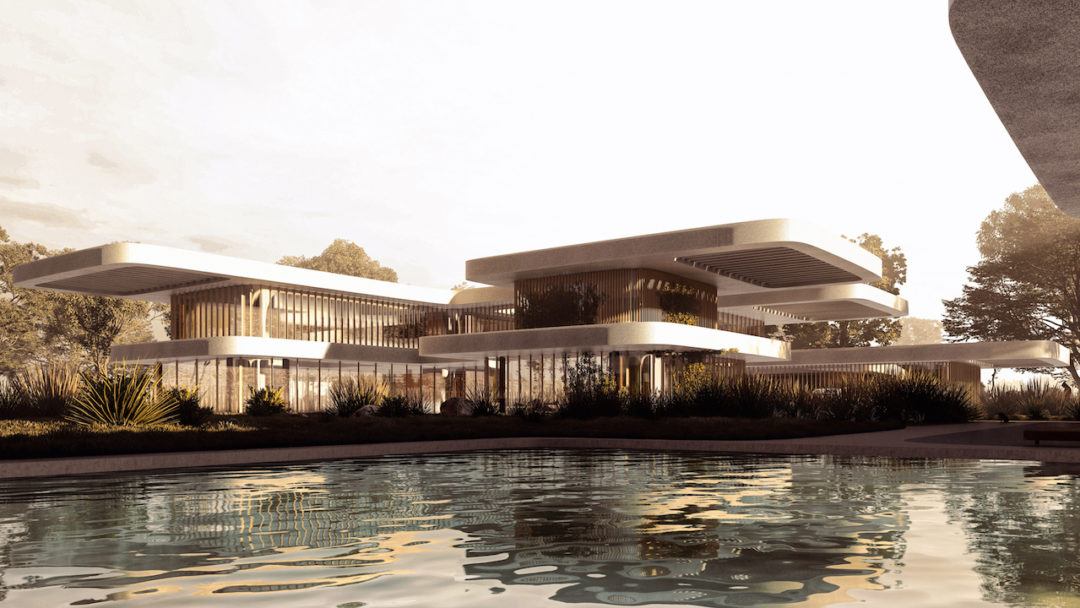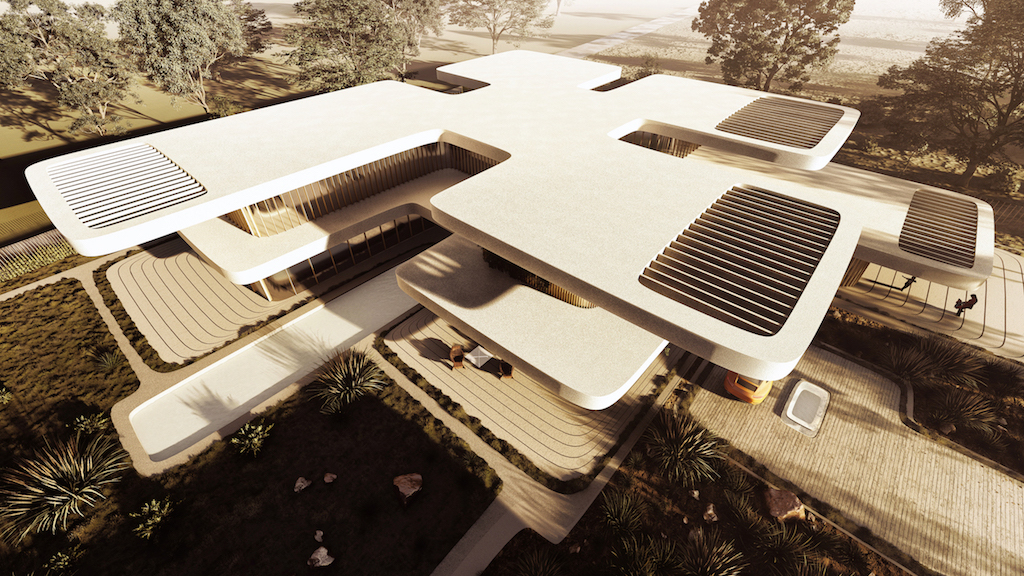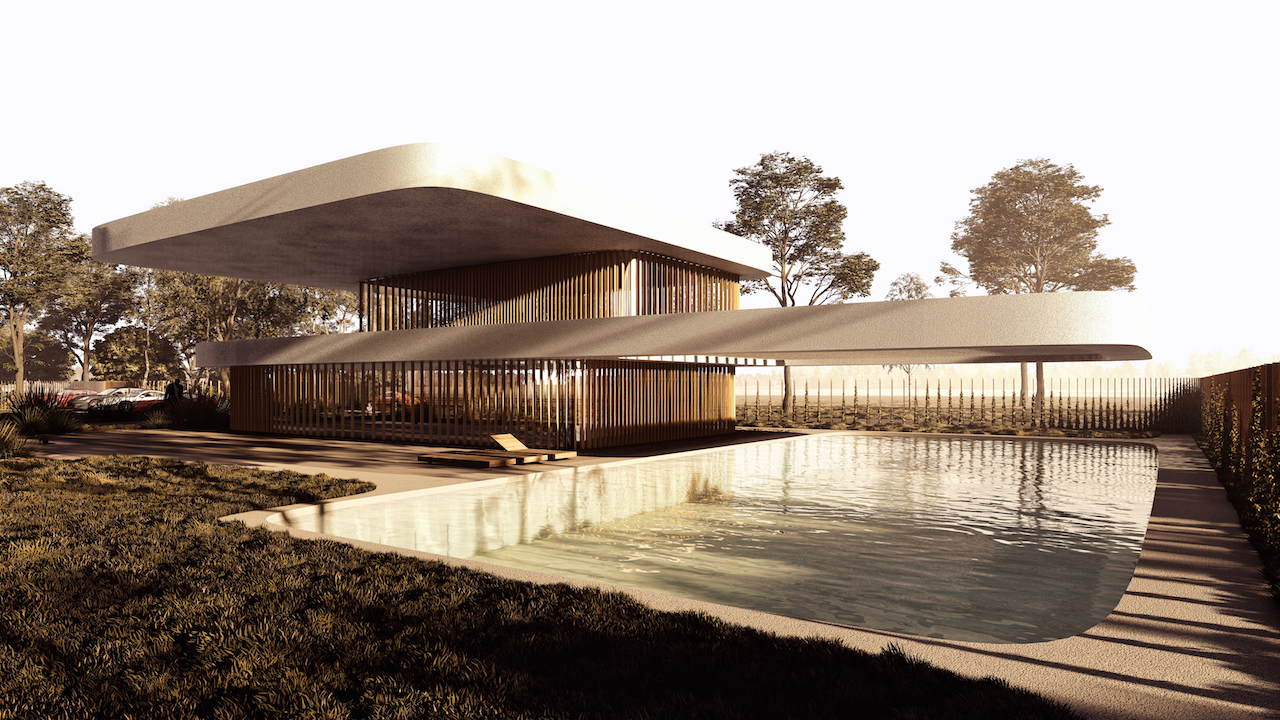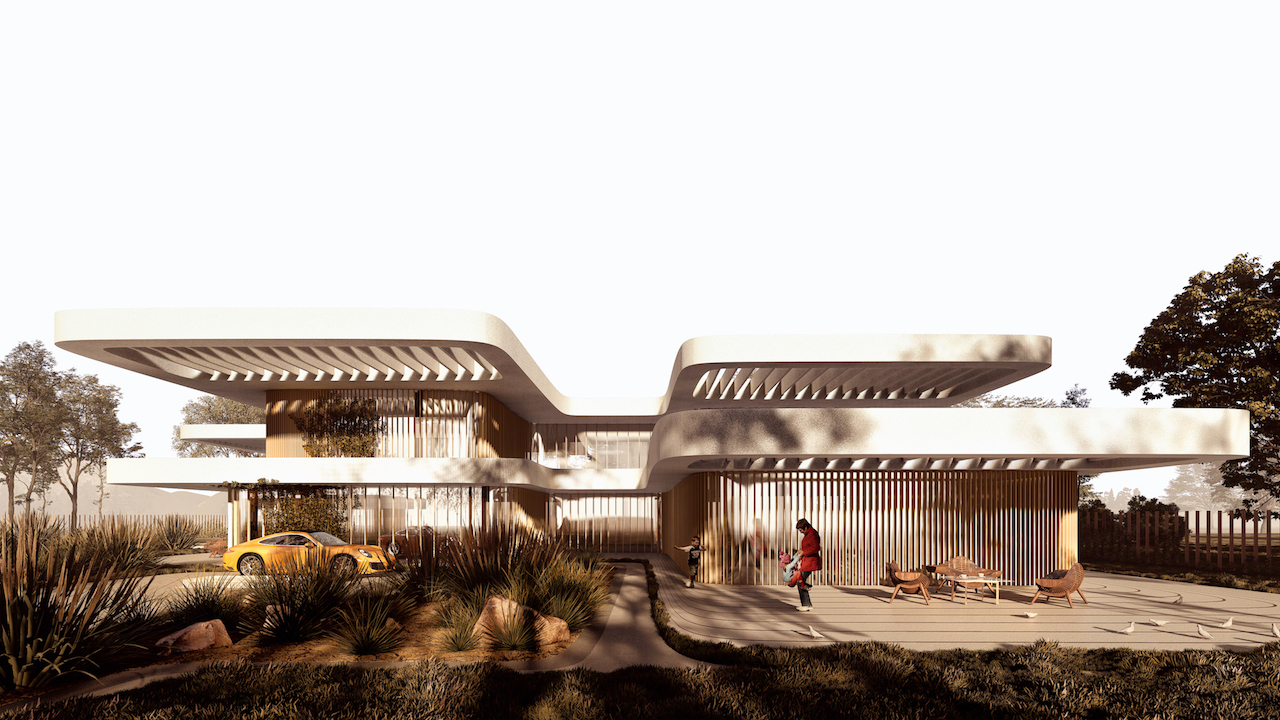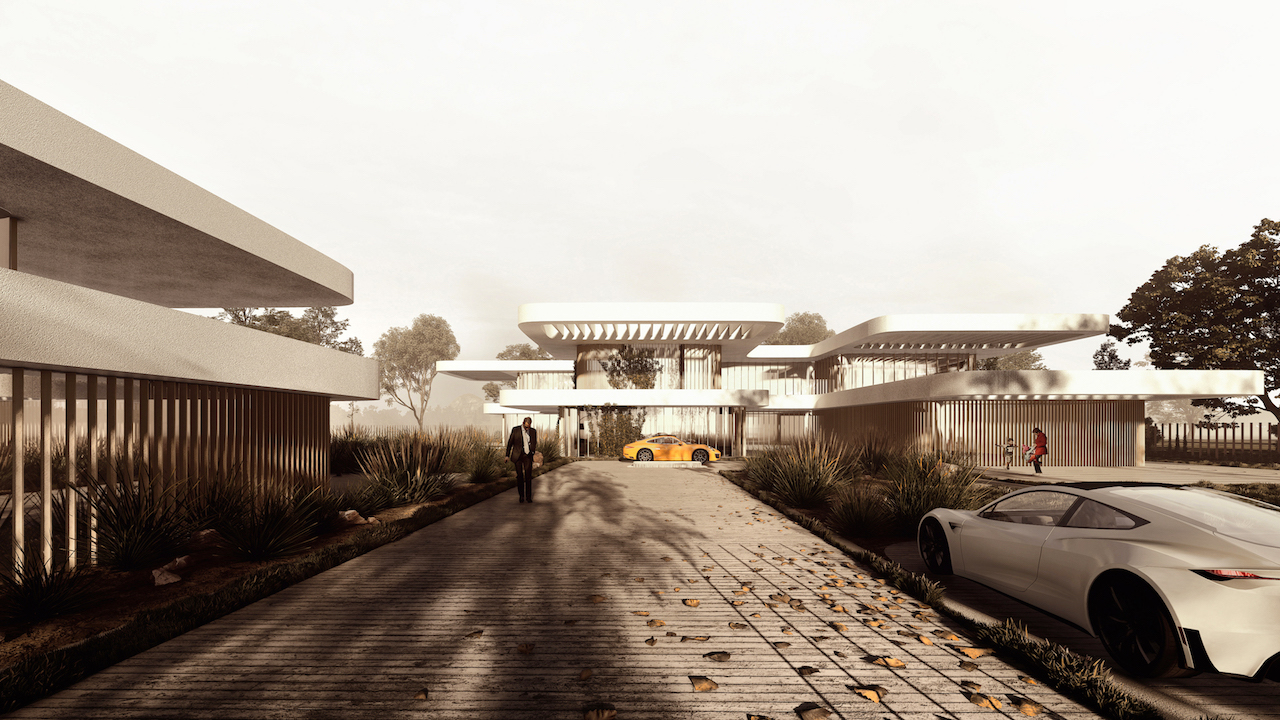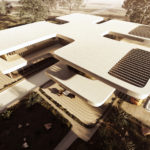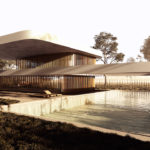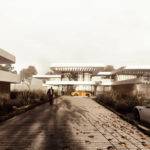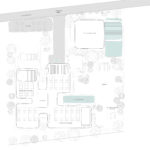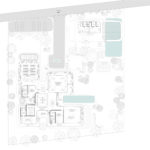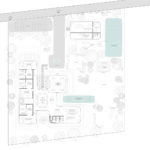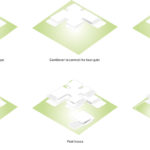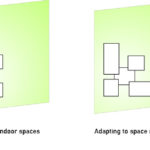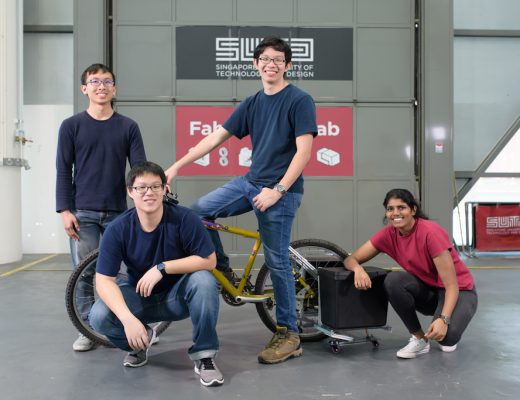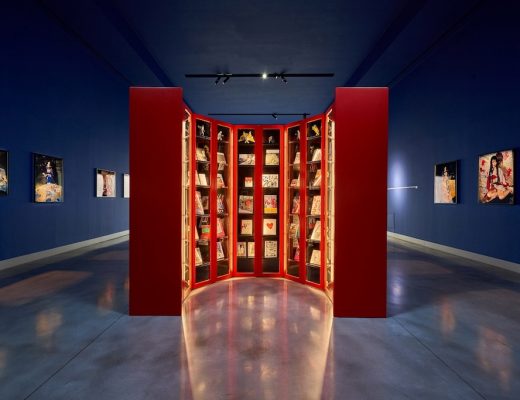New Delhi-based practice Studio Symbiosis, led by principal architects Amit Gupta and Britta Knobel Gupta, has designed a modernist private residential project called the Floating Terraces in India’s Hyderabad city. The villa has been designed as a canvas for its residents that acts as a background for them to adapt the spaces to their aspirations and contemporary lifestyle.
The property is nested in nature, whereby the form delineates to create a series of outdoor courtyards that create an intimate connection between the built structure and the landscape.
A series of floating cascading terraces extend the indoor living to comfortable outdoor spaces yet protecting the residents from the harsh climatic conditions of Hyderabad.
The spatial organisation of the villa and movement through spaces are designed to create varied levels of privacy and differentiated relationship with the landscape. At the heart of the villa is a double height living space that spills over into the kitchen, library, formal drawing and outdoor landscape. Bedrooms are flanked along this central living space, designed as intimate spaces, with each bedroom having its own outdoor courtyard.
Accessed through an intimate courtyard, the villa opens up into a grand double height family living. From the entrance itself and from the family living, the view opens up to four different green courtyards where the plantation flows inside to evoke a feeling of being connected with nature. This spatially spills over from the indoor living spaces into outdoor semi-covered spaces and further into open green areas.
Each bedroom has three-sided views towards the garden. Each of these bedrooms have an outdoor courtyard, thereby creating a module of indoor-outdoor space and giving each family member a sense of privacy in their own small garden space adjoining the bedroom.
The concept here is to create a series of floating terraces along with semi-enclosed courtyards. A nine-grid square plan was the starting point of the design, that was derived from Vastu Shastra (traditional Indian system of architecture) and was then modulated by creating the alternating periphery grids into outdoor courtyards. This presents a formal expression of an undulating form where the built and the surrounding landscape interact with each other.
The deep cantilevers are an expression of freedom of living where you are not restricted to indoor living in the hot climate of Hyderabad. They also ensure that the scorching summer sun is restricted from entering the villa’s indoor spaces and during winter months, the residents can enjoy the warmth of the sun.
Vertical wooden fins wrap around the building, on the premises of heat gain and visual porosity required inside the house. A delineating fluid transition has been designed for these fins, to create a sense of a whole, rather than parts, which is reflected as in the image of the villa.
Exposed concrete, natural wood, green and water are the four elements used in the design, and each one is used to provoke the senses.
The villa has an outhouse that features a gym, pool, spa and outdoor kitchen for celebrity chefs to display their culinary skills.
Project details:
Architecture / Interiors / Landscape: Studio Symbiosis
Site Area: 1 Acre
Built-up Area: 1100 sqm Villa, 180 sqm Gym/Shop
Project team: Amit Gupta, Britta Knobel Gupta, Gaurav Gupta, Amit Agrawal, Kartik Misra, Jitendra Farkade, Vedant Sangal, Anjan Mondal, Chaithanya Goyal, Govinda Dey, Deeksha Lalwani, Bhanuja Dora, Chinmay Chowdhary, Harshi Garg, Gagandeep Singh Virdi
See the full image and renderings gallery here:
You might also like:
Studio Symbiosis to design Perfume Park and Museum in India’s Kannauj city
Studio Symbiosis Architects propose giant urban air purifiers to tackle pollution problem in Delhi

